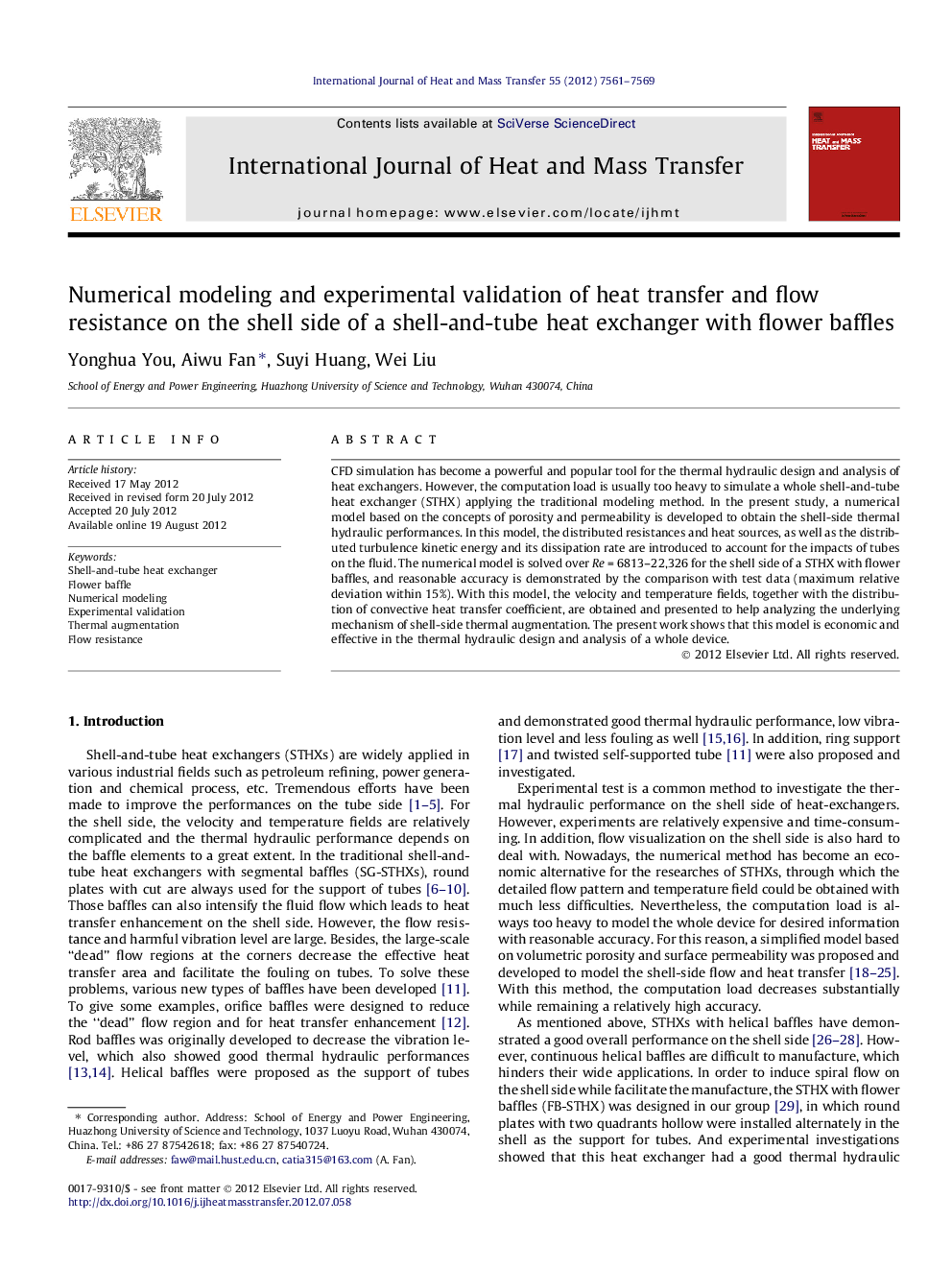| Article ID | Journal | Published Year | Pages | File Type |
|---|---|---|---|---|
| 7059339 | International Journal of Heat and Mass Transfer | 2012 | 9 Pages |
Abstract
CFD simulation has become a powerful and popular tool for the thermal hydraulic design and analysis of heat exchangers. However, the computation load is usually too heavy to simulate a whole shell-and-tube heat exchanger (STHX) applying the traditional modeling method. In the present study, a numerical model based on the concepts of porosity and permeability is developed to obtain the shell-side thermal hydraulic performances. In this model, the distributed resistances and heat sources, as well as the distributed turbulence kinetic energy and its dissipation rate are introduced to account for the impacts of tubes on the fluid. The numerical model is solved over Re = 6813-22,326 for the shell side of a STHX with flower baffles, and reasonable accuracy is demonstrated by the comparison with test data (maximum relative deviation within 15%). With this model, the velocity and temperature fields, together with the distribution of convective heat transfer coefficient, are obtained and presented to help analyzing the underlying mechanism of shell-side thermal augmentation. The present work shows that this model is economic and effective in the thermal hydraulic design and analysis of a whole device.
Related Topics
Physical Sciences and Engineering
Chemical Engineering
Fluid Flow and Transfer Processes
Authors
Yonghua You, Aiwu Fan, Suyi Huang, Wei Liu,
